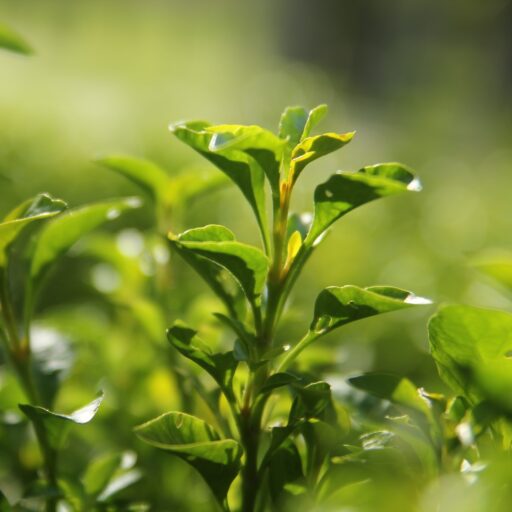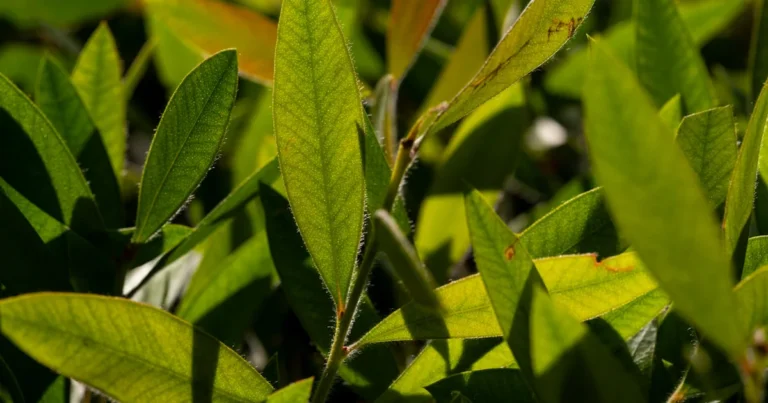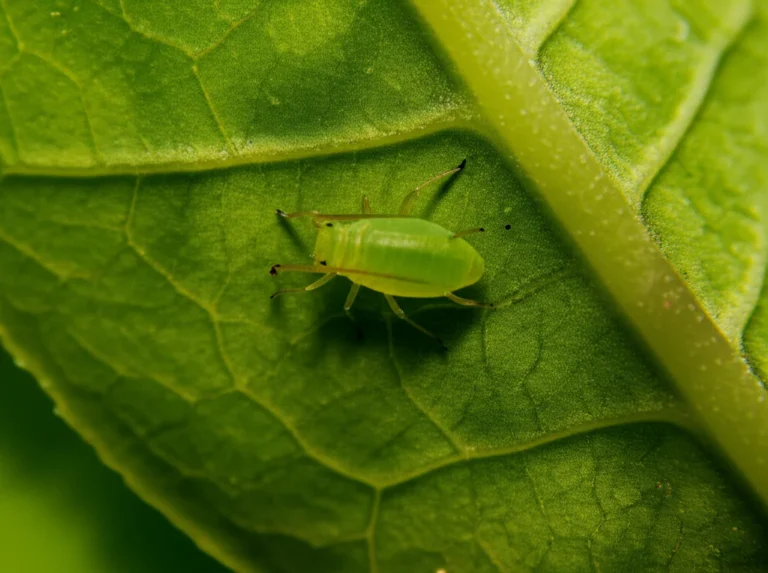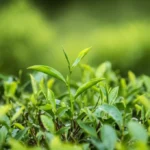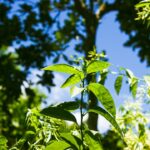Support our educational content for free when you purchase through links on our site. Learn more
8 Powerful Tea Garden Pest Natural Predators You Must Know 🐞 (2025)
Imagine walking through your lush tea garden and spotting tiny warriors silently patrolling the leaves—spiders weaving intricate webs, ladybugs munching on aphids, and birds swooping down to feast on pesky caterpillars. These unsung heroes are the natural predators that keep your tea plants healthy and thriving without a drop of harmful pesticide. At Growing Teas™, we’ve witnessed firsthand how embracing these biological allies transforms pest-ridden patches into vibrant, balanced ecosystems.
Did you know that in some tea plantations, spiders alone account for up to 98% of natural pest control? Or that birds contribute nearly half of all predation events on tea pests? Intrigued? Later in this article, we’ll introduce you to eight essential natural predators, share insider tips on attracting and nurturing them, and reveal how a little patience and biodiversity can save your tea crop from devastating infestations—just like it did for us during the infamous “Great Aphid Invasion of ’22.”
Key Takeaways
- Natural predators like ladybugs, spiders, and parasitic wasps are vital for sustainable tea pest control.
- Spiders are the dominant predators in tea gardens, responsible for the majority of pest suppression.
- Birds and amphibians also play crucial roles in maintaining pest balance.
- Creating habitat through companion planting, bug hotels, and water sources attracts and supports beneficial insects.
- Avoid broad-spectrum pesticides to preserve your garden’s natural defense system and prevent pest resurgence.
- Integrated Pest Management (IPM) combines natural predators with cultural practices for effective, eco-friendly pest control.
Ready to meet your garden’s tiny superheroes and learn how to cultivate a thriving, pest-resistant tea paradise? Let’s dive in!
Table of Contents
- ⚡️ Quick Tips and Facts: Your Speedy Guide to Natural Pest Control
- 🌿 The Unseen Guardians: A Deep Dive into Tea Garden Biological Pest Control
- 🐛 Understanding the Enemy: Common Tea Pests and Their Menace
- 🦸 ♀️ Our Green Allies: Meet the Natural Predators of Tea Gardens
- 1. The Mighty Ladybugs: A Beetle’s Best Friend in Pest Management
- 2. Lacewings: Delicate Wings, Fierce Appetites for Tea Pests
- 3. Predatory Mites: Tiny Titans of Tea Pest Control
- 4. Parasitic Wasps: Nature’s Precision Strikers for Tea Plant Protection
- 5. Spiders: The Silent Weavers of Protection in Your Tea Plantation
- 6. Birds: Feathered Friends on Patrol for Tea Garden Health
- 7. Amphibians & Reptiles: Ground-Level Guardians of Tea Ecosystems
- 8. Other Beneficial Insects: A Diverse Defense Force for Sustainable Tea Growing
- 🏡 Cultivating a Sanctuary: How to Attract and Nurture Beneficial Insects in Your Tea Garden
- 🌱 The Growing Teas™ Way: Our Sustainable Pest Management Philosophy
- 🚫 Common Pitfalls: What NOT to Do in Your Tea Garden’s Pest Management
- 🦋 Beyond the Bugs: The Broader Ecosystem of a Thriving Tea Garden
- ☕ Our Personal Brew: Anecdotes from the Growing Teas™ Fields on Natural Pest Control
- ✅ Conclusion: Brewing a Future with Nature’s Helpers
- 🔗 Recommended Links: Further Reading for the Eco-Conscious Tea Grower
- ❓ FAQ: Your Burning Questions About Natural Pest Control, Answered!
- 📚 Reference Links: Our Sources for Sustainable Wisdom
⚡️ Quick Tips and Facts: Your Speedy Guide to Natural Pest Control
Welcome, tea lovers and fellow growers! Before we get into the nitty-gritty of turning your tea garden into a balanced ecosystem, here are some quick takeaways from the team at Growing Teas™:
- Embrace the Bugs! 🐞 Not all insects are foes. Many, like ladybugs and lacewings, are voracious predators of common tea pests.
- Spiders are Superheroes 🕷️: Believe it or not, spiders are the most dominant predators in tea plantations, accounting for a staggering 65% to 98% of natural pest controllers in some areas.
- Birds Do Their Part 🐦: A study using artificial caterpillars found that birds were responsible for nearly half (48.1%) of all predation events in tea gardens.
- Ditch the Harsh Chemicals ☠️: Broad-spectrum pesticides kill indiscriminately, wiping out the beneficial insects that form your garden’s natural defense system. This can lead to a nasty cycle of pest resurgence.
- Plant Smart 🌿: Companion planting isn’t just a charming idea; it’s a scientifically-backed strategy. Planting things like mint, chamomile, or marigolds can deter pests and attract helpful predators.
- Provide Shelter & Water 💧: A simple bug hotel or a shallow dish of water with pebbles can make your garden a five-star resort for beneficial insects, encouraging them to stick around.
🌿 The Unseen Guardians: A Deep Dive into Tea Garden Biological Pest Control
Here at Growing Teas™, we’ve learned a thing or two about the delicate dance of nature in our fields. It’s a bit like brewing the perfect cup—it’s all about balance. For years, the default answer to a pest problem was to spray it away. But as a study in Nature points out, this approach has some serious downsides, like residues and pest resistance. That’s why “emphasis on biological control is increasing, focusing on the preservation and introduction of natural enemies like predators, parasitoids and pathogens”.
Think of your tea garden not as a sterile factory floor, but as a bustling metropolis. In this city, you have your citizens (the tea plants), your troublemakers (the pests), and a dedicated, unpaid police force (the natural predators). Our job, as mindful tea growers, is to support that police force. It’s a cornerstone of our Organic Farming Techniques philosophy. This is the art and science of biological pest control: letting nature’s own systems do the heavy lifting. It’s about creating an environment so healthy and balanced that pests simply can’t get a foothold. Ready to meet the tiny, unsung heroes of the tea world?
🐛 Understanding the Enemy: Common Tea Pests and Their Menace
Before you can assemble your team of heroes, you need to know the villains they’re up against. Tea plants, unfortunately, are a tasty snack for a whole host of critters. Here are some of the usual suspects we keep an eye out for:
- Mites (especially the Red Spider Mite): These tiny arachnids suck the life out of leaves, reducing their ability to photosynthesize and leaving them with a bronzed, unhealthy look.
- Aphids and Jassids (Leafhoppers): These sap-suckers, like Empoasca vitis, can cause leaves to curl and stunt the growth of tender new shoots. The black citrus aphid even excretes a sticky “honeydew” that leads to sooty mold.
- Tea Mosquito Bug (Helopeltis theivora): Don’t let the name fool you; this bug is a major menace, especially in wet weather. It injects toxic saliva into the plant, causing shoots to turn black and brittle.
- Caterpillars (Looper, Flushworm, etc.): The larval stage of moths and butterflies can wreak havoc by munching on leaves and burrowing into tender buds, causing significant defoliation.
- Thrips: These tiny, slender insects also feed on young leaves, causing damage that can reduce the overall quality and yield of your tea.
Knowing what you’re up against is the first step. Now, let’s bring in the cavalry.
🦸 ♀️ Our Green Allies: Meet the Natural Predators of Tea Gardens
This is where the magic happens! Cultivating a healthy tea garden is less about eliminating pests and more about inviting in their natural enemies. These predators are the cornerstone of a sustainable ecosystem.
1. The Mighty Ladybugs: A Beetle’s Best Friend in Pest Management
Who doesn’t love a ladybug? These charming beetles are more than just pretty faces. Both the adults and their alligator-like larvae are aphid-devouring machines! They are one of the first beneficial insects people think of, and for good reason. They are key predators that help keep populations of aphids and other soft-bodied pests in check.
2. Lacewings: Delicate Wings, Fierce Appetites for Tea Pests
Green lacewings are another all-star predator. While the elegant adults primarily feed on nectar and pollen, their larvae, often called “aphid lions,” are incredibly voracious. They use their sickle-shaped jaws to prey on aphids, mites, caterpillars, and other pests with gusto. Having a healthy lacewing population is like having a 24/7 pest control service on call.
3. Predatory Mites: Tiny Titans of Tea Pest Control
It’s a mite-eat-mite world out there! While some mites, like the red spider mite, are destructive pests, others are powerful allies. Predatory mites are specialists that feed on their plant-eating cousins, providing a targeted and effective form of biological control right where the problem starts.
4. Parasitic Wasps: Nature’s Precision Strikers for Tea Plant Protection
Don’t worry, we’re not talking about the big, scary wasps that ruin your picnic. Parasitic wasps are often tiny, non-stinging insects that play a crucial role in pest management. They lay their eggs inside or on specific host pests, like caterpillars or aphids. The wasp larvae then hatch and consume the host from the inside out. It’s a bit gruesome, but incredibly effective!
5. Spiders: The Silent Weavers of Protection in Your Tea Plantation
Okay, we know some of you might be squirming, but it’s time to rebrand the spider. In the world of tea, spiders are the undisputed champions of pest control. As one scientific paper aptly states, “Spiders are among the most abundant predators of insects in terrestrial ecosystems.” Research from Chinese tea plantations is particularly revealing:
- Spiders can make up 65.0% to 97.8% of all predators in a tea garden.
- One study identified the jumping spider, Evarcha albaria, as a “key predator” of the damaging tea green leafhopper (Empoasca vitis). This spider’s population peaks at the same time as the pest, and gut analysis showed it had the highest predation rate among all spiders studied.
- Another study confirmed that actively hunting spiders had a stronger negative correlation with leafhopper abundance than sit-and-wait web-building spiders.
So, next time you see a web glistening in your tea bushes, give a little nod of thanks to the garden’s hardest-working guardian.
6. Birds: Feathered Friends on Patrol for Tea Garden Health
Our feathered friends are also key players. A fascinating study in Fujian, China, used green plasticine “dummy caterpillars” to measure predation rates. The results were astounding: birds were responsible for 48.1% of attacks on the fake pests. Interestingly, bird predation was higher in the tea plantation areas and increased with distance from the forest edge, suggesting they actively patrol the cultivated areas for food.
7. Amphibians & Reptiles: Ground-Level Guardians of Tea Ecosystems
Don’t forget the ground crew! Toads, frogs, and small lizards are fantastic at controlling slugs, caterpillars, and other pests that live at the base of your tea plants. Creating a welcoming environment with some ground cover and a water source can bring these helpful critters into your garden.
8. Other Beneficial Insects: A Diverse Defense Force for Sustainable Tea Growing
The list goes on! A healthy tea ecosystem is buzzing with a diverse range of helpers:
- Praying Mantises: These patient predators will eat just about any pest they can get their claws on.
- Assassin Bugs (Reduviid bugs): With a name like that, you know they mean business. These bugs are effective generalist predators.
- Hoverflies (Syrphid Flies): Their larvae are aphid-eating specialists, while the adults are excellent pollinators.
🏡 Cultivating a Sanctuary: How to Attract and Nurture Beneficial Insects in Your Tea Garden
So, you’ve met the team. How do you recruit them? You can’t just put out a “Help Wanted” sign. You need to create an environment where they’ll thrive. It’s about providing three key things: food, water, and shelter.
🌻 Companion Planting for Pest Control: The Power of Biodiversity in Tea Fields
Monocultures are a dinner bell for pests. By diversifying your plantings, you confuse pests and create a haven for beneficials. This is a key principle in both Green Tea Cultivation and Herbal Tea Planting.
- Planting for Predators: Many adult beneficials, like parasitic wasps and hoverflies, feed on nectar and pollen. Planting a variety of flowering plants ensures a steady food supply. Good choices include:
- Carrot Family: Dill, fennel, cilantro, and Queen Anne’s Lace are fantastic for attracting tiny parasitic wasps.
- Daisy Family: Sunflowers (pollen-rich varieties), cosmos, and yarrow attract hoverflies, ladybugs, and more.
- Herbs: Mint, lemon balm, and chamomile can repel pests while their flowers attract beneficials.
- Trap Cropping: This clever technique involves planting something that pests love even more than your tea. For example, planting nasturtiums nearby can attract aphids, concentrating them in one spot where predators like ladybugs can easily feast on them.
| Plant Category | Examples | Attracts/Deters |
|---|---|---|
| Aromatic Herbs | Mint, Basil, Rosemary, Lavender | Deters cabbage moths, flies, mosquitoes. Attracts pollinators. |
| Carrot Family | Dill, Fennel, Cilantro | Attracts ladybugs, lacewings, parasitic wasps. |
| Daisy Family | Marigold, Cosmos, Sunflowers | Deters nematodes (marigolds), attracts hoverflies, ladybugs. |
| Legumes | Clover, Vetch | Fixes nitrogen in the soil, provides ground cover for predators. |
🌳 Creating Habitat: More Than Just a Meal for Natural Predators
Your garden’s guardians need places to live, hide, and raise their young.
- Leave the Leaves: A layer of mulch or leaf litter at the base of your plants provides shelter for ground beetles and spiders.
- Build a Bug Hotel: These are simple structures you can build to provide nesting sites. You can use materials like hollow bamboo canes, logs with drilled holes, pinecones, and rolled-up cardboard. Place it in a sunny, sheltered spot.
- Go a Little Wild: Don’t be too tidy! Leaving a small patch of your garden to grow a bit wild with native plants and grasses can provide crucial habitat for a wide range of beneficial insects.
💧 Water Sources: An Essential Invitation for Your Garden’s Heroes
Even the smallest insects need water. Providing a safe source can make a huge difference.
- Shallow is Key: A simple birdbath or a shallow dish is perfect.
- Add Landing Pads: Place pebbles, stones, or marbles in the water so insects have a safe place to land and drink without drowning.
- Keep it Fresh: Change the water regularly to prevent mosquito larvae from developing.
🌱 The Growing Teas™ Way: Our Sustainable Pest Management Philosophy
Our approach isn’t about waging war on pests. It’s about fostering peace and balance. We believe in a proactive, holistic strategy that minimizes intervention and maximizes the power of the natural ecosystem.
🌍 Integrated Pest Management (IPM): A Holistic Approach to Tea Health and Sustainability
Integrated Pest Management, or IPM, is a multi-faceted approach that combines various control methods to keep pests at a tolerable level. It’s not about eradication; it’s about management. The goal is to use the least disruptive methods first.
As the summary of the featured video on this topic highlights, an IPM strategy involves a combination of tactics. This includes bolstering natural predator populations, but also using manual efforts. For instance, carefully plucking affected leaves can remove a significant portion of a pest population—up to 50% in some cases—without resorting to sprays. Cultural controls like proper pruning, field sanitation, and shade management are also vital components of a robust IPM plan.
IPM Pyramid: A Tiered Approach
- Prevention (Base): Healthy soil, proper plant spacing, and choosing pest-resistant varieties.
- Cultural & Physical Controls: Companion planting, proper pruning, and manual removal of pests.
- Biological Controls: Encouraging and introducing natural predators.
- Targeted Chemical Controls (Tip): As a last resort, using selective, eco-friendly options like neem oil or insecticidal soaps.
⚖️ When to Intervene: Balancing Nature and Necessity in Tea Pest Control
So, when do you step in? The key is monitoring. Regularly inspect your plants for signs of trouble. But don’t panic at the first sight of an aphid! Often, if you wait a bit, the predators will show up to the party. We only consider intervening when a pest population reaches an “economic injury level”—that is, when the damage they’re causing is significant enough to impact the harvest. Even then, we start with the softest approach possible.
🚫 Common Pitfalls: What NOT to Do in Your Tea Garden’s Pest Management
Sometimes, our best intentions can backfire. Here are a few common mistakes to avoid to keep your garden’s ecosystem thriving.
❌ The Perils of Broad-Spectrum Pesticides on Beneficial Organisms
This is the number one mistake. Broad-spectrum pesticides (like many organophosphates and pyrethroids) are the chemical equivalent of a bomb—they kill everything, good and bad. Wiping out the natural predator population creates a vacuum. The pests, which often reproduce faster, return first and with no one to keep them in check, their population explodes. This is called pest resurgence, and it can lead to a secondary outbreak that’s even worse than the original problem.
❌ Destroying Natural Habitats: Undermining Your Own Defense
An overly manicured garden can be a desert for beneficial insects. By removing all leaf litter, wild edges, and “weeds” (many of which are food sources for beneficials), you’re evicting your own security team. A little bit of managed wildness is a very good thing for the biodiversity of your tea garden.
❌ Ignoring Early Warning Signs: A Recipe for Disaster
While we advocate for patience, we don’t advocate for neglect. A small aphid problem can become a huge infestation if left completely unchecked for too long. Regular monitoring allows you to take small, gentle steps—like a targeted spray of water or introducing ladybugs—before you have a full-blown crisis on your hands.
🦋 Beyond the Bugs: The Broader Ecosystem of a Thriving Tea Garden
It’s easy to get hyper-focused on the pests and predators, but it’s crucial to remember they are just two parts of a much larger, interconnected web. The health of your soil, the diversity of your surrounding plants, the presence of pollinators, and the quality of your water source all play a role. A thriving tea garden is a symphony of life, and every player has a part. When you focus on building a healthy ecosystem from the ground up, you’ll find that many pest problems solve themselves. This holistic view is not only good for your tea, but it also contributes to the incredible Health Benefits of Tea that we all enjoy.
☕ Our Personal Brew: Anecdotes from the Growing Teas™ Fields on Natural Pest Control
I’ll never forget the “Great Aphid Invasion of ’22.” We had a new section of young Camellia sinensis plants, and it seemed like overnight, the tender new shoots were covered in aphids. The temptation to grab a sprayer was immense. Our farm manager, a wise old grower named Arthur, just smiled and said, “Patience, young grasshopper. The guests will arrive shortly.”
Instead of spraying, we did two things. First, we went to a nearby meadow and collected a few dozen ladybugs. Second, we planted a border of sweet alyssum and dill around the affected patch. For a few days, it felt like we were losing the battle. Then, it happened. We started seeing the ladybugs, then their hungry larvae. Tiny hoverflies, drawn by the alyssum, began darting between the plants. Within two weeks, the aphid population had crashed. The plants were saved, and we had a beautiful, buzzing border of flowers to show for it. It was a powerful lesson: sometimes the best action is to create the right conditions and then trust nature to do its work. It’s a story we love to tell when we’re teaching folks about DIY Tea Blending, because the best ingredients always come from the healthiest plants.
✅ Conclusion: Brewing a Future with Nature’s Helpers

As we wrap up our deep dive into the fascinating world of tea garden pest natural predators, one thing is crystal clear: nature has already provided the best pest control team imaginable. From the stealthy spiders weaving their webs to the charming ladybugs and the vigilant birds patrolling the canopy, these allies are indispensable for sustainable tea cultivation.
Remember the aphid invasion story from our fields? It perfectly illustrates the power of patience and ecological balance. Rather than rushing to chemical solutions, creating a welcoming environment for beneficial predators allowed nature to restore harmony—and saved our precious tea plants.
While pesticides might offer quick fixes, they come with steep costs: harming beneficial species, causing pest resurgence, and leaving residues on your tea leaves. Instead, by embracing biological control and Integrated Pest Management (IPM), you’re not just protecting your crop—you’re nurturing a thriving ecosystem that supports long-term productivity and health.
So, what’s the final takeaway? Invest in biodiversity, monitor your garden closely, and trust your natural predators. They’re the unsung heroes of your tea garden, working tirelessly behind the scenes to keep pests in check and your tea flourishing.
Ready to transform your tea garden into a vibrant, balanced ecosystem? Let’s keep growing smarter, greener, and tastier—one leaf at a time!
🔗 Recommended Links: Further Reading for the Eco-Conscious Tea Grower
Looking to equip your tea garden with the best tools and knowledge for natural pest control? Here are some top picks from our experience and research:
- Ladybug Release Kits:
- Lacewing Larvae for Biological Control:
- Bug Hotels & Beneficial Insect Habitats:
- Neem Oil and Organic Insecticidal Soap:
- Books on Organic Pest Management and Tea Cultivation:
- The Organic Gardener’s Handbook of Natural Pest and Disease Control by Fern Marshall Bradley & Barbara W. Ellis — Amazon Link
- Tea: Cultivation to Consumption by K.C. Willson and M.N. Clifford — Amazon Link
- Biological Control in Plant Protection by K. G. Mukerji — Amazon Link
❓ FAQ: Your Burning Questions About Natural Pest Control, Answered!

What are the advantages of using natural predators in tea farming?
Natural predators provide sustainable, eco-friendly pest control that reduces reliance on chemical pesticides. They help maintain ecological balance, prevent pest resurgence, and improve tea quality by avoiding harmful residues. Plus, they support biodiversity, which benefits the entire garden ecosystem.
Can birds act as natural pest controllers in tea gardens?
Absolutely! Birds are voracious predators of many tea pests, including caterpillars and leafhoppers. Studies show birds account for nearly half of predation events in tea plantations, especially in areas farther from forest edges. Encouraging bird-friendly habitats can boost their pest control services.
How do ladybugs contribute to pest control in tea cultivation?
Ladybugs, both adults and larvae, are aphid-eating powerhouses. They consume large numbers of soft-bodied pests like aphids and mites, helping keep these populations under control naturally. Releasing ladybugs or planting nectar-rich flowers to attract them can enhance their effectiveness.
Read more about “10 Sustainable Tea Gardening Practices to Grow a Greener Garden 🌱 (2025)”
What are the best organic methods to manage tea garden pests?
Organic methods include:
- Encouraging natural predators (ladybugs, lacewings, spiders)
- Companion planting with pest-repellent or nectar-producing plants
- Manual removal of pests and affected leaves
- Using organic sprays like neem oil or insecticidal soap as a last resort
- Maintaining habitat diversity and shelter for beneficial insects
Read more about “What Are the 14 Most Common Pests & Diseases That Wreck Tea Plants? 🍃 (2025)”
How can beneficial insects protect tea plants naturally?
Beneficial insects prey on or parasitize pests, interrupting their life cycles. For example, parasitic wasps lay eggs inside caterpillars, while predatory mites consume harmful spider mites. By fostering a diverse community of beneficials, you create a self-regulating pest control system.
Which natural predators help control tea garden pests?
Key natural predators include:
- Spiders (especially jumping spiders like Evarcha albaria)
- Ladybugs (Coccinellidae)
- Lacewings (Chrysopidae)
- Predatory mites
- Parasitic wasps
- Assassin bugs
- Praying mantises
- Birds (various insectivorous species)
What are the common pests found in tea gardens?
Common tea pests include:
- Red spider mites
- Aphids and leafhoppers (e.g., Empoasca vitis)
- Tea mosquito bug (Helopeltis theivora)
- Caterpillars (loopers, flushworms)
- Thrips
Read more about “Tea Troubles? 12 Growing Challenges Solved! 🌿”
How to create a habitat for natural pest predators in a tea garden?
Create habitat by:
- Planting nectar- and pollen-rich companion plants (dill, fennel, marigolds)
- Leaving leaf litter and mulch for shelter
- Building bug hotels with bamboo, logs, and pinecones
- Providing shallow water sources with landing stones
- Maintaining some wild or uncultivated patches for refuge
Read more about “🌱 10 Must-Know Companion Plants for Tea Gardens (2025)”
What role do spiders play as natural predators in tea gardens?
Spiders are the most abundant and effective predators in tea plantations. They consume vast numbers of pests like leafhoppers and aphids. Studies show species like Evarcha albaria have high predation rates and temporal overlap with pests, making them invaluable biological control agents.
Can ladybugs be used to control tea garden pests naturally?
Yes! Ladybugs are widely used in biological control programs. They can be purchased and released into tea gardens to target aphids and other soft-bodied pests. They are safe, effective, and a favorite among organic growers.
Read more about “Can I Grow Tea at Home? 15 Expert Tips to Start Today! 🍵 (2025)”
How to attract natural pest predators to your tea garden?
Attract predators by:
- Planting diverse flowering plants for nectar and pollen
- Providing shelter and overwintering sites
- Avoiding broad-spectrum pesticides
- Maintaining water sources
- Using companion planting and trap crops
Read more about “12 Best Tea Plant Varieties for Growing in the US 🌿 (2025)”
Which birds are natural predators of tea garden pests?
Insectivorous birds such as flycatchers, warblers, tits, and swallows are common natural predators in tea gardens. They feed on caterpillars, leafhoppers, and other pests, helping maintain pest populations at manageable levels.
How can beneficial insects help manage pests in a tea garden?
Beneficial insects reduce pest numbers through predation and parasitism. They target various pest life stages, preventing outbreaks and reducing the need for chemical interventions. Their presence is a sign of a healthy, balanced ecosystem.
Read more about “Using Mulch for Tea Plant Health: 7 Secrets to Thriving Leaves 🌿 (2025)”
What are the most effective natural predators for controlling tea garden pests?
The most effective include:
- Jumping spiders (Evarcha albaria)
- Ladybugs
- Lacewings
- Parasitic wasps
- Predatory mites
- Birds
These predators have been scientifically shown to overlap temporally and spatially with pests, maximizing their control potential.
📚 Reference Links: Our Sources for Sustainable Wisdom
- Zhang, Z., et al. (2017). Predation Pressure in Tea (Camellia sinensis) Plantations in China: The Role of Spiders. Scientific Reports. https://www.nature.com/articles/s41598-017-07668-w
- Zhang, Y., et al. (2020). Predation Pressure in Tea Plantations: Arthropods and Birds. PMC. https://pmc.ncbi.nlm.nih.gov/articles/PMC7240450/
- Ladybug Information and Releases — The Ladybug Company
- Neem Oil Product Information — NeemTree
- Bug Hotel Building Guide — Royal Horticultural Society
- Integrated Pest Management Overview — USDA IPM
- Tea Cultivation and Pest Management — FAO Tea Production
We hope this guide empowers you to harness the power of natural predators in your tea garden. For more expert advice and tips, explore our Organic Farming Techniques and Green Tea Cultivation categories. Happy growing! 🌱☕
